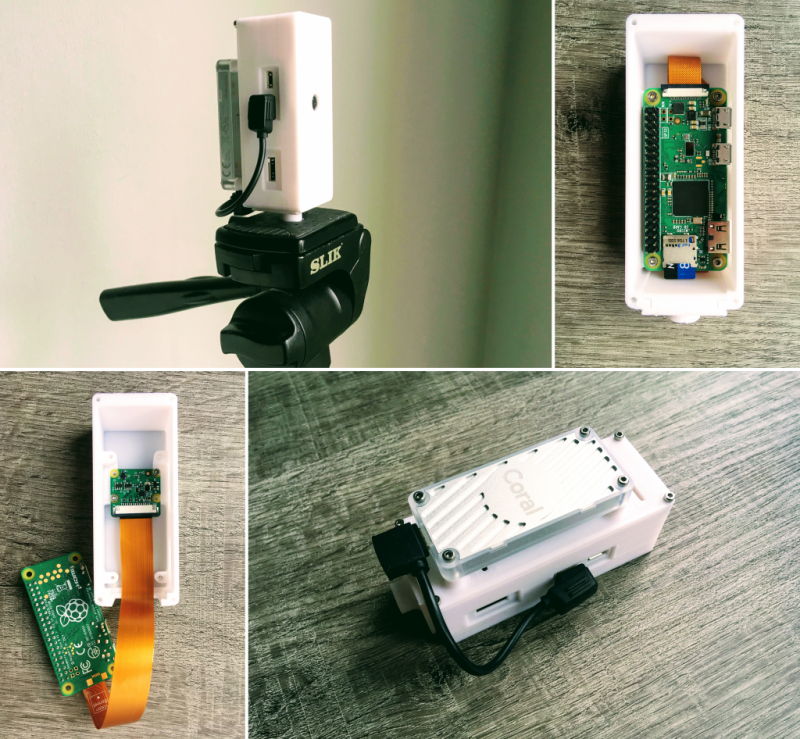As machine learning and artificial intelligence becomes more widespread, so do the number of platforms available for anyone looking to experiment with the technology. Much like the single board computer revolution of the last ten years, we’re currently seeing a similar revolution with the number of platforms available for machine learning. One of those is Google Coral, a set of hardware specifically designed to take advantage of this new technology. It’s missing support to work with certain hardware though, so [Ricardo] set out to get one working with a Raspberry Pi Zero with this smart camera build based around Google Coral.
The project uses a Google Coral Edge TPU with a USB accelerator as the basis for the machine learning. A complete image for the Pi Zero is available which sets most of the system up right away including headless operation and includes a host of machine learning software such as OpenCV and pytesseract. By pairing a camera to the Edge TPU and the Raspberry Pi, [Ricardo] demonstrates many of its machine learning capabilities with several example projects such as an automatic license plate detector and even a mode which can recognize whether or not a face mask is being worn, and even how correctly it is being worn.
For those who want to get into machine learning and artificial intelligence, this is a great introductory project since the cost to entry is so low using these pieces of hardware. All of the project code and examples are available on [Ricardo]’s GitHub page too. We could even imagine his license plate recognition software being used to augment this license plate reader which uses a much more powerful camera.
















Google announces the discontinuation of Google Coral in 3….2…..1….
Kind of makes you wonder what you could do if you had direct access to the 4 TOPS (Trillion Operations Per Second) processing cores inside the Google Coral.
I found this ( https://github.com/shazz/coral-dev-opencl ) , which has access to the Vivante GC7000Lite GPU in the coral but absolutely no access to the TPU processing cores. The bottom of the README.md has some OpenCL stats for the Vivante GC7000Lite GPU which can be compared to stats for the Videocore IV in the Raspberry Pi 3.
Sorry that is for the Coral Dev Board which has a NXP i.MX 8M SoC (with a builtin Vivante GC7000Lite GPU) and the Edge TPU would normally be accessed via PCIe and I2C/GPIO on that particular board.
Well, actually you do. Thing is – those 4 TOPS are not general purpose compute. So as long as you can express your computation in what the chip supports – all them 4 TOPS are belong to us!
Yes, but at a fundamental level it is a massive array of addition and multiplication followed by addition, if applied to brute forcing problems that are not AI related at all that is a insane amount of processing power.
There is a datasheet for the $19.99 chip, but as a datasheet it is closer to a sales brochure than an actual honest to goodness datasheet. Yes it does give an example PCIe schematic, but the meat of the datasheet is completely missing it is a 21 page datasheet instead of a 400+ page document ( https://coral.ai/static/files/Coral-Accelerator-Module-datasheet.pdf ).
Great project! Incidentally, check out JeVois Pro just launching on Kickstarter, with Coral and other accelerators inside. https://www.kickstarter.com/projects/1602548140/jevois-pro-open-source-deep-learning-ai-camera
Great idea but that Coral will be crippled by the specs of the Pi0, USB2.0 and slow CPU won’t be able to keep it fed properly. I guess it won’t matter too much because it’s overkill for a single camera anyway.